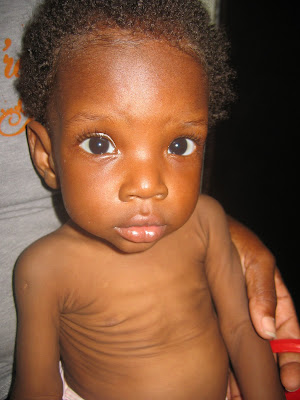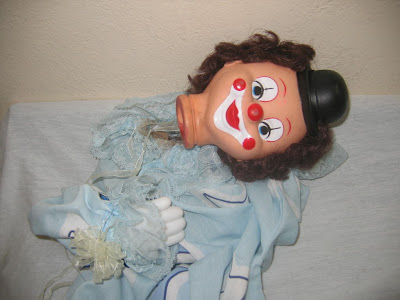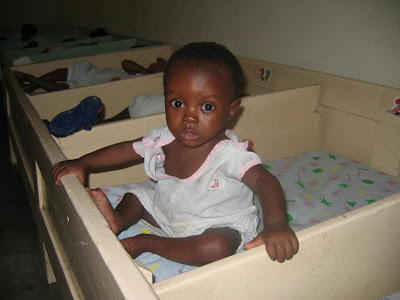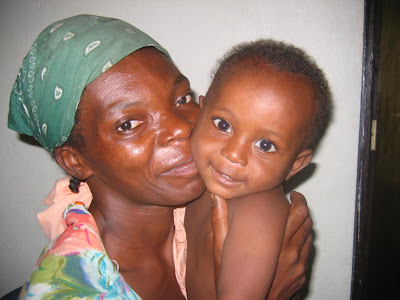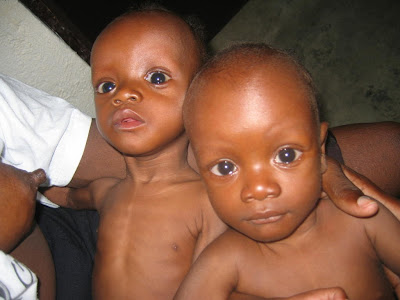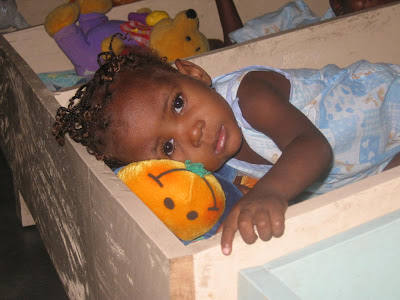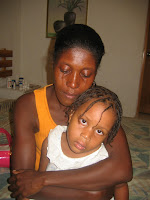
The two girls pictured to the right had surgery at OSF in Peoria several years ago. Both are 27 years old now and are in Haiti.
One girl is Jenny and the other is Heureuse.
Jenny teaches at a school for children that are deaf. Heureuse lives in a slum with her children aged two and four years.
I have written about both girls in the past.
I examined both of them last week in Haiti and both need heart surgery. OSF is refusing them care. Written communication several years ago from OSF’s lawyer, Doug Marshall, stated that OSF would no longer care for Haitian Hearts patients. Thus, Jenny and Heuruese will not receive the care they need and deserve from OSF. Their chances at long term survival are minimal.
We have buried a couple of young Haitian Hearts patients in the last couple of years and most likely will bury more.
When I talked with Bishop Daniel Jenky about Haitian Hearts several years ago, he was very afraid to support the Haitian kids and go against OSF. Simply put, I believe that Bishop Jenky was concerned about alienating the Peoria area business community and did not want to hurt his Diocesan Capital Campaign in any way. He did not want to embarrass OSF.
The Ethical and Religious Directives for Catholic Health Care Services did not seem important to Bishop Jenky or to OSF. The Directives state that collaboration amongst Catholic health care providers is very important for the good of the patient.
Neither the Catholic Diocese of Peoria or OSF offered the Haitian patients any alternative. Haitian kids would have to suffer more.
I was totally astounded by the actions of OSF and the Catholic Diocese of Peoria and I still am in disbelief that their respect for children lives in the Haitian Hearts program seems to be nonexistent.
The Catholic Post is the paper of the Peoria Diocese. Bishop Jenky is the publisher. The September 23, 2007 issue has an article entitled: Educators Urged to Teach Social Doctrine.
A speaker named Jan Rosenhauer spoke to principals of Catholic schools in the Diocese of Peoria at King’s House. She made some very dramatic statements about the church’s social doctrine.
Some excerpts from the article:
“In her address, Rosenhauer described the roots and foundation of the church’s social doctrine, including Scripture and the teachings of popes.
“Among the key Scripture passages is the parable of the Last Judgment in the 25th chapter of the Gospel of St. Matthew. In that parable, Jesus says we will be judged based on how we responded to the poor, needy, and suffering in our midst.
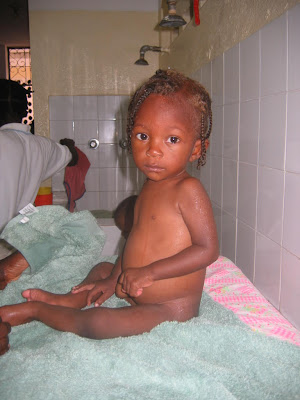
“It’s clearly a profound message about what it means to be a disciple of Jesus Christ. There aren’t a lot of other places where Jesus is so explicit about how we are going to be judged.”
“The Eucharist commits us to the poor,” she said, quoting the Catechism of the Catholic Church.
“As we receive the Eucharist and become more and more connected to Christ, we become more and more conformed to Christ’s life and how He associated himself so closely with the poor in so many ways in his life,” said Rosenhauer.
“The first and most fundamental theme, said Rosenhauer, is the life and dignity of the human person.
“This idea of the dignity of the human person changes everything—it’s a whole different world view,” she said.
“When teaching social doctrine, Catholic educators need to connect the “tradition of action” with the “tradition of thought”, said Rosenhauer.
“Within the social doctrine’s “tradition of action” there are two kinds of good work: the works of charity or service, and the works of justice.
“Charity addresses immediate needs, but working for justice means striving to address the underlying causes that create the needs that charity addresses…”
Bishop Jenky, OSF, and the OSF legal team in Peoria need to read this article in the Catholic Post and put the “tradition of thought” regarding sick and dying Haitian kids into the “tradition of action”.





